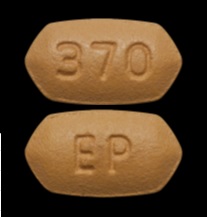Tolcapone Disease Interactions
There are 6 disease interactions with tolcapone.
Dopamine agonists (applies to tolcapone) hypotension
Moderate Potential Hazard, Moderate plausibility.
Dopamine agonists may impair the systemic regulation of blood pressure, with resultant orthostatic hypotension at any time, but especially during dose escalation. Additionally, patients with Parkinson's disease may have an impaired capacity to respond to an orthostatic challenge. For these reasons, patients with Parkinson's disease (or restless legs syndrome) who are being treated with dopaminergic agonists typically require careful monitoring for signs/symptoms of orthostatic hypotension, especially during dose escalation, and should be advised of this risk.
Dopaminergic antiparkinsonian agents (applies to tolcapone) psychosis
Moderate Potential Hazard, Moderate plausibility.
Ordinarily, patients with major psychotic disorder should not be treated with dopaminergic antiparkinsonian agents, because of the risk of exacerbating psychosis. Hallucinations and psychotic-like behavior have been reported with dopaminergic medications. In addition, certain medications used to treat psychosis may exacerbate the symptoms of Parkinson's disease and may decrease the effectiveness of these drugs. The use of bromocriptine in patients with severe psychotic disorders is not recommended.
Tolcapone (applies to tolcapone) hallucinations
Moderate Potential Hazard, Moderate plausibility. Applicable conditions: Psychosis
Reversible hallucinations have occurred (usually within the first 2 weeks of therapy) in patients receiving tolcapone. Confusion, occasional insomnia, and excessive dreaming commonly accompany the hallucinations. Therapy with tolcapone should be administered cautiously in patients with or predisposed to psychoses or emotional disorders. Reducing the levodopa dosage may result in resolution of hallucinations. Clinical monitoring of mental status is recommended.
Tolcapone (applies to tolcapone) hepatic dysfunction
Moderate Potential Hazard, Moderate plausibility. Applicable conditions: Liver Disease
Transaminase (AST/ALT) levels >3 times (occasionally 8 times) the upper limits of normal have occurred in 1% to 3% of patients administered tolcapone, depending on the dosage. Approximately 1/3 of these patients also developed diarrhea. Tolcapone is extensively metabolized by the liver to inactive forms and < 0.5% is eliminated unchanged by the kidney. A 50% reduction in clearance and volume of distribution has occurred in patients with moderate liver cirrhosis, resulting in a 2 fold increase in concentration of unbound tolcapone. Therapy with tolcapone should be administered cautiously in patients with compromised hepatic function. Clinical monitoring of hepatic function is recommended prior to initiation of tolcapone, monthly during the first 3 months, and every 6 weeks for the next 3 months of therapy.
Tolcapone (applies to tolcapone) hypotension/syncope
Moderate Potential Hazard, Moderate plausibility.
Tolcapone-enhanced bioavailability of levodopa can induce orthostatic hypotension and/or syncope. Adjunct therapy with tolcapone should be administered cautiously in patients with, predisposed to, or adversely affects by hypotension and/or syncope.
Tolcapone (applies to tolcapone) renal dysfunction
Moderate Potential Hazard, Moderate plausibility.
Approximately 60% of tolcapone is eliminated by the kidney and < 0.5% is excreted unchanged in the urine. Dosage modification is not indicated for patients with mild to moderate renal impairment. The pharmacokinetic disposition of tolcapone has not been determined in patients with severe renal impairment and tolcapone should be administered cautiously in these patients.
Switch to professional interaction data
Tolcapone drug interactions
There are 291 drug interactions with tolcapone.
Tolcapone alcohol/food interactions
There is 1 alcohol/food interaction with tolcapone.
More about tolcapone
- tolcapone consumer information
- Check interactions
- Compare alternatives
- Pricing & coupons
- Drug images
- Side effects
- Dosage information
- During pregnancy
- Drug class: dopaminergic antiparkinsonism agents
- Breastfeeding
- En español
Related treatment guides
Drug Interaction Classification
| Highly clinically significant. Avoid combinations; the risk of the interaction outweighs the benefit. | |
| Moderately clinically significant. Usually avoid combinations; use it only under special circumstances. | |
| Minimally clinically significant. Minimize risk; assess risk and consider an alternative drug, take steps to circumvent the interaction risk and/or institute a monitoring plan. | |
| No interaction information available. |
See also:
Further information
Always consult your healthcare provider to ensure the information displayed on this page applies to your personal circumstances.


